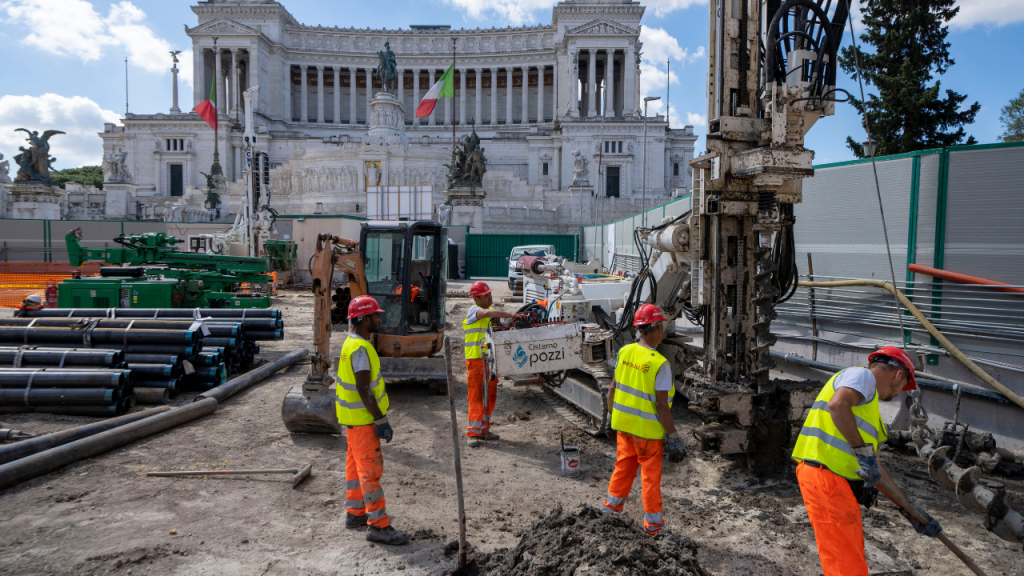Rome’s Metro C subway project is making progress with the construction of a 280-foot deep retaining wall around the flagship station at Piazza Venezia. Chief engineer Andrea Sciotti anticipates project completion by 2034, following years of bureaucratic, funding, and archaeological obstacles. The subway line will traverse beneath significant cultural heritage sites such as the Colosseum and Trajan’s Column, adding complexity to the already challenging project.
The Metro C subway line has been in development for twenty years but has faced delays due to bureaucratic and funding issues, as well as the need for extensive archaeological excavations due to the presence of underground ruins from Imperial Roman and Medieval civilizations. When finished, the subway line will run beneath some of the world’s most important cultural heritage sites, including the Colosseum, Trajan’s Column, and the Basilica of Maxentius, in addition to Renaissance palazzi, churches, and the Vatican. The involvement of Italy’s culture ministry has been crucial at every phase, and archaeologists will guide the excavations to preserve and study artifacts found along the way.
The Piazza Venezia station is considered unique in the world due to its connection to the Colosseum, Basilica of Maxentius, and approximately 15-20 meters of hidden archaeological patrimony. The site presents challenges that must be addressed during planning and construction to ensure the protection of the underground ruins and above-ground historic buildings. The construction will include the establishment of a museum within the station to house artifacts found during excavations, a unique aspect of the Metro C project.
The construction of the 280-foot deep retaining wall around the Piazza Venezia station is currently in progress, with a focus on creating a secure perimeter to prevent water infiltration. The use of new technology enables the digging to proceed under archaeological sites while safeguarding the above-ground cultural heritage. The intricate nature of the project highlights the need for careful planning and execution to protect historic structures while expanding the public transport system.
Once completed, the Piazza Venezia station will offer underground connections to prominent landmarks such as the Vittoriano monument, Palazzo Venezia museum, and the museum under Hadrian’s Athenaeum. The subway tunnels will be constructed at a depth of 150 feet to minimize vibrations and potential damage to historic buildings above ground. The delicate nature of the work near the Hadrian archaeological site requires careful monitoring to prevent any adverse impact on the Trajan’s Column and surrounding structures.
Overall, the Metro C subway project represents a significant engineering and archaeological endeavor in Rome. Despite the challenges posed by the city’s rich historical heritage, the project aims to enhance the public transport system and provide new connections to key cultural sites. With careful planning, technological innovation, and archaeological expertise, the completion of the Metro C line by 2034 will be a testament to the collaborative efforts of engineers, archaeologists, and cultural heritage experts in preserving Rome’s past while embracing its future.


